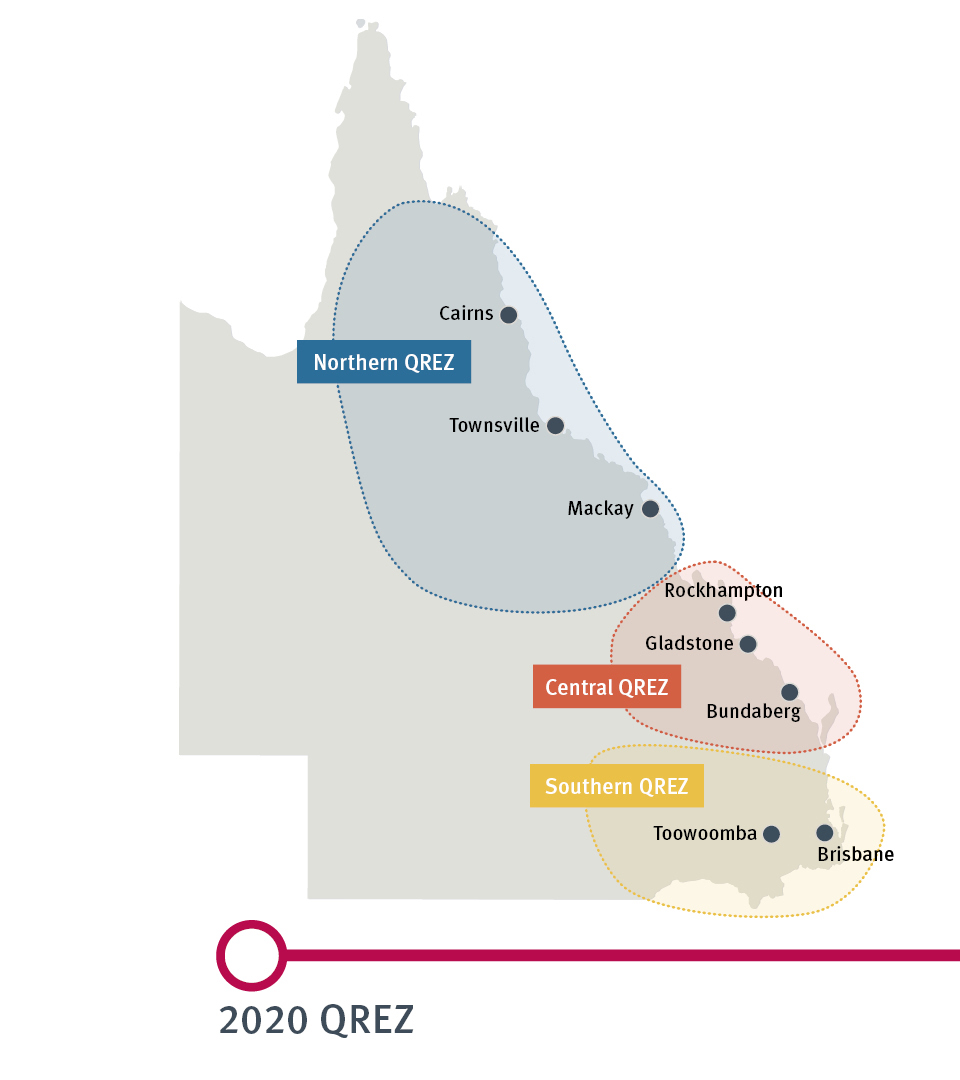The Banana Shire is set to become a renewable energy hub
The Queensland government announced a revision of its renewable energy target from 50 percent of the State’s total energy needs produced by renewable energy in 2030, increasing it to 70 percent by 2032 and 80 percent five years later. As of 1 July 2022, a little over 21 percent of electricity used in Queensland is produced from renewable energy sources. To hit these fresh targets a raft of renewable initiatives, including solar and wind farms as well as energy storage and upgrades to the transmission grid are slated across Queensland all collectively outlined in what the government has titled as the Queensland Energy and Jobs Plan.
Why Banana Shire?
Central Queensland is the energy powerhouse of our state and currently hosts more than 4,600 megawatts of coal-fired energy production. It has an established distribution powerline network stemming from the likes of the Callide power station and a good amount of the infrastructure necessary to accommodate the transition, with strategic advantages like grid connection, a highly skilled workforce, established community relationships, and available land.
This, as well as other factors like weather patterns, makes the Banana Shire an ideal place to situate renewable energy projects. At the time of writing, some 21 renewable energy projects are slated for the Banana Shire, with some started, some in planning, and others awaiting approval.
The Banana Shire Council wholly supports the new plan but is now working with the State government to ensure that the transition is feasible. “There’s some significant problems we have to overcome,” said Banana Shire Mayor, Nev Ferrier.
“It’s a well-known fact the bridges in the area are not up to code to carry the loads of the blades and other large pieces of equipment required for renewable development. They need to be upgraded,” added Mayor Ferrier.
What’s in it for the Banana Shire?
In a nutshell, money, jobs, and growth. All new renewable projects must commit financially to the community by way of community grants and rates, just like the traditional energy companies do currently. Companies that operate in the Shire must commit to a percentage of their gross revenue to the local community. The revenue from these companies will subsidise everyone’s rates and improve the community facilities. Modelling estimates that the state economy will experience a whopping $25.7 billion more growth by 2040 than without the Energy and Jobs Plan.
According to the Plan, the Queensland SuperGrid, a new network of storing and transmitting green energy, will create around 100,000 jobs by 2040, with 95 percent of investment in regional Queensland. Cleaner energy, the Plan states, will deliver new industries like renewable hydrogen with the potential to create tens of thousands of decent, secure jobs in regional Queensland.
All of this will lead to growth over the coming years, predicts Mayor Ferrier. “It’s inevitable that the Shire will grow with more people, businesses, and support industries setting up shop in the Banana Shire to service these new companies.”
What will happen to power stations and their employees?
The Queensland Government has committed to progressively converting all publicly owned coal-fired power stations, like Callide, into clean energy hubs by 2035 with the support of the Queensland Renewable Energy and Hydrogen Jobs Fund (QREHJ Fund). In light of the new targets, this has been increased from $2 billion to $4.5 billion. The Government has also implemented a new $150 million Job Security Guarantee to support workers from publicly owned coal-fired power stations.
The End Result
The Queensland Energy and Jobs Plan promises to be a boon for the Banana Shire and its community, with more jobs, more revenue from renewable companies and growth for the towns within the community. Mayor Ferrier says that ultimately the development will benefit the community in the short- and long-term. “Not only will this plan benefit our current residents, but their children and grandchildren. We will be at the center of the of making the world greener and cleaner, which will be a great benefit to future generations.”



